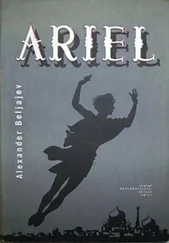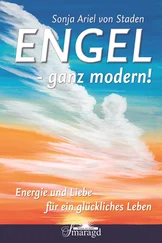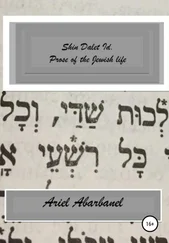Ariel Toaff - Blood Passover
Здесь есть возможность читать онлайн «Ariel Toaff - Blood Passover» весь текст электронной книги совершенно бесплатно (целиком полную версию без сокращений). В некоторых случаях можно слушать аудио, скачать через торрент в формате fb2 и присутствует краткое содержание. Жанр: Религиоведение, на английском языке. Описание произведения, (предисловие) а так же отзывы посетителей доступны на портале библиотеки ЛибКат.
- Название:Blood Passover
- Автор:
- Жанр:
- Год:неизвестен
- ISBN:нет данных
- Рейтинг книги:3 / 5. Голосов: 1
-
Избранное:Добавить в избранное
- Отзывы:
-
Ваша оценка:
- 60
- 1
- 2
- 3
- 4
- 5
Blood Passover: краткое содержание, описание и аннотация
Предлагаем к чтению аннотацию, описание, краткое содержание или предисловие (зависит от того, что написал сам автор книги «Blood Passover»). Если вы не нашли необходимую информацию о книге — напишите в комментариях, мы постараемся отыскать её.
Blood Passover — читать онлайн бесплатно полную книгу (весь текст) целиком
Ниже представлен текст книги, разбитый по страницам. Система сохранения места последней прочитанной страницы, позволяет с удобством читать онлайн бесплатно книгу «Blood Passover», без необходимости каждый раз заново искать на чём Вы остановились. Поставьте закладку, и сможете в любой момент перейти на страницу, на которой закончили чтение.
Интервал:
Закладка:
571
"Quod apud ipsos Iudeos non reperitur scriptum, sed inter ipsos ita dicitur apud doctos et peritos in lege, et istud habetur ex successione memorie, et tenetur pro secreto inter ipsos Iudeos [...] et quod necesse est quod talis sanguis sit sanguis pueri Cristiani masculi et non femine, et qui non sit maioris etatis 7 annorum" [“That no text will be found among those Jews, but that it was said among those same Jews and experts in the law, and that they handed it down from generation to generation in memory, and it was kept secret among those Jews […] and that it was necessary for this blood to be the blood of a Christian boy and not a girl, and that he could not be more than 7 years old”] (cfr. ibidem, p. 357).
572
"Quod omnes praedicti astantes posuerunt manum ad suffucandum illum, ponendo modo unus, modo alius manum, et quod omnes praedicti Judaei adjuverunt ad interficiensum, quia existimant omnes Hebraei quod ille multum promereatur apud Deum, qui adjuverat ad interficiendum aliquem puerum christianum" ["That all those present placed their hands on him to suffocate him, some of them placing one hand, some of them both hands, and that all the above mentioned Jews helped kill him, because they thought that all those Hebrews would be promoted before God who helped kill that Christian boy in any way”]. Deposition of Isacco da Gridel del 28 Novembre 1475. Cfr. [BonelIi], Dissertazione apologetica , cit., p. 144. On this argument, see also Divina, Storia del beato Simone da Trento , cit., voI. II, pp. 34-36. It should be noted that, according to the trial records, the defendants accused of the ritual murder at Valréas in 1247 claimed that they had performed the rite of crucifixion out of revenge against Jesus, responsible for the tragic exile of the Jewish people ("debebant eam crucifigere per illum prophetam, qui vocatur Jesus, per quem sunt in captivitate et in deffectu ipsius hec fecerunt") [“they must crucify him for the prophet whom they call Jesus, for whom they are in captivity and they did it because of that”] and that the participants had placed their hands on the child ("quod omnes tetigerunt puellam causa venie") [“and they all touched the child to obtain indulgence”]. Cfr. M. Stern, Urkundliche Beiträge über die Stellung der Päpste zu den Juden, Kiel, 1895, voI. II, p. 51.
573
On these funeral rites, proper to German Judaism, see Hilkhot w-minhage' R. Shalom mi-Neustadt ("Rules and Customs of rabbi Shalom of Wiener Neustadt"), by Sh. Spitzer, Jerusalem, 1997, p. 188; A. Unna, Miminhage' yahadut Ashkenaz ("Among the Customs of the Jews of Germany"), in A. Wassertil, Yalkut minhagim , Jerusalem, 1976, voI. II, p. 34.
574
"Et dicit ipse Samuel se scire predicta et ea didicisse non quod legerit in scripturis suis, sed quia dici audivit et didicit a quodam preceptore Iudeo qui vocabatur magister David Sprinç, qui regebat scolas in Bamberg et in Nurremberg, sed quo preceptore ipse Samuel didicit iam .XXX. annis preteritis. Et dicit interrogatus, quod dictus magister David ivit postea in Poloniam et nescit an vivit vel sit mortuus" (cfr. Esposito and Quaglioni, Processi, cit., voI. I, p. 253).
575
On the life and rabbinical activity of David Tebel Sprinz at Bamberg, Nuremberg and Poznán, see Germania Judaica , Tübingen, 1987, vol. III: 1350-1519 , t. I, p. 76; vol. III, t. II, pp. 1014-1015; Yoseph b. Moshè, Leqet yosher , by J. Freimann, Berlin, 1904, p. XXV, par. 30; Yuval, Scholars in Their Time , cit., pp. 369-377.
576
Samuele in fact is said to have claimed that ignorant Ashkenazi were not aware of this custom either. Maestro Tobia da Magdeburg, as we have seen, although he was a physician, was not very well versed in Hebraic culture, seeking to persuade the inquisitors that he had become aware of the blood ritual only having come into contact, at Trent, with the same Samuele, with Mosè "the Old Man" da Würzburg and with Angelo da Verona. "Tobias [...] se numquam usum fuisse dicto sanguine nec unquam dici audivisse de dicto sanguine, nisi hiis diebus quibus Samuel, Moises et Angelus sibi dixerunt" (cfr. Esposito and Quaglioni, Processi , cit., voI. I, p. 318).
577
"Et dicit quod ipsi Iudei Italici non habent istud in scripturis suis, sed bene dicitur quod de hoc est scriptura inter Iudeos qui sunt ultra mare" (cfr. ibidem, p. 251).
578
On this argument, see K. von Amira, Das Endinger Judenspiel , Halle, 1883; R. Po-Chia Hsia, The Myth of Ritual Murder . Jews and Magic in Reformation Germany , New Haven (Conn.) - London, 1988, pp. 18-22.
579
"(Lazarus et David de Alemania) responderunt se nolle intromittere in illa re, quia dicebant se esse impeditos ad faciendum alia, quia volebant ire in Riperiam territorii Brixiensis ad emendum de citronis, causa portandi illos in Alemaniam" [“(Lazarus and David of Germany) said they didn’t want to get mixed up in this business, because they said they were prevented from doing otherwise, because they wanted to go to Riva in the Brescian region and buy citrus fruit, to take it to Germany”] (cfr. Esposito and Quaglioni, Processi , cit., vol. I; p. 242). Many Central European Jewish communities provided themselves with the palm ( tulavim ) and cedar ( etroghim ) leaves necessary for the celebration of the festivities of the Capanne (Sukkot), purchasing them at San Remo and on the Italian Riviera. The 1435 statutes of San Remo provided for the sale of cedar and palm leaves to Jews, who were granted the option of choosing cedars in compliance with the ritual requirements, when the leaves were still attached to the trees (cfr. R. Urbani and G. Zazzu, Ebrei a Genova , Genoa, 1984, p. 22). Other destinations favored by these emissaries of the Ashkenazi Jewish communities responsible for purchasing the ritual cedar leaves, were Lago di Garda region, celebrated in the responses of rabbi Mordekhai Jaffe in the mid-16 century, followed by Puglia and the Florentine countryside (cfr. A. Toaff, Il vino e la carne. Una comunità ebraica nel Medioevo , Bologna, 1989, pp. 124,127, and soprattutto Sh. Schwarzfuchs, De Gênes à Trieste. Le commerce millénaire des cédrats , in G. Todeschini and P.C. Ioly Zorattini, Il mondo ebraico. Gli ebrei tra Italia nord-orientale e Impero asburgico dal Medioevo all'Età contemporanea , Pordenone, 1991, pp. 259-286).
580
Ristretto della vita e martirio di S. Simone fanciullo della città di Trento , Rome, Filippo Neri alle Muratte, 1594, pp. 9-10.
581
Ibidem, pp. 26-27.
582
In an important essay, Isadore Twersky ( The Contribution of Italian Sages to Rabbinic Literature , in "Italia Judaica", I, 1983, p. 390) stresses "the sturdy, sometimes aggressive, Ashkenazi sentiment of allegiance which characterizes central and Eastern Europe at this time, where Ashkenazi origins are flaunted and the scrupulous rigidity of Ashkenazi precedent is held aloft”.
583
"(Iudei) habent istud pro secreto, et unus narrat alteri ex successione, et aliter non reperitur scriptura inter ipsos Iudeos" [Approximately: “(The Jews) keep this a secret, and tell it from generation to generation, and that otherwise it was not written down among these Jews”] (cfr. Esposito and Quaglioni, Processi , cit., voI. I, p. 251).
584
"Et dicit quod alii Iudei similiter ita faciunt, prout ipse vidit fieri et audivit, dicens quod predicta fiunt secretissime inter ipsos" [“And he said that the other Jews did the same, just as he saw and heard it being done, saying that it was a big secret among them”] (cfr. ibidem, p. 125).
Читать дальшеИнтервал:
Закладка:
Похожие книги на «Blood Passover»
Представляем Вашему вниманию похожие книги на «Blood Passover» списком для выбора. Мы отобрали схожую по названию и смыслу литературу в надежде предоставить читателям больше вариантов отыскать новые, интересные, ещё непрочитанные произведения.
Обсуждение, отзывы о книге «Blood Passover» и просто собственные мнения читателей. Оставьте ваши комментарии, напишите, что Вы думаете о произведении, его смысле или главных героях. Укажите что конкретно понравилось, а что нет, и почему Вы так считаете.












